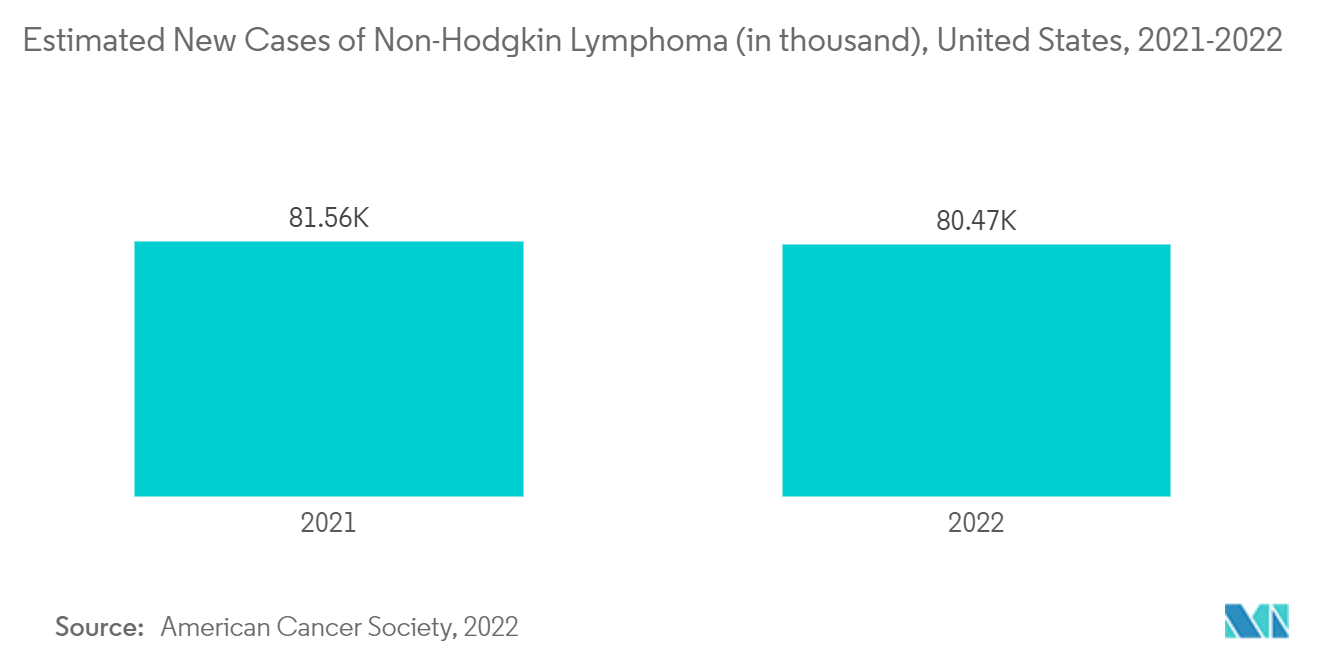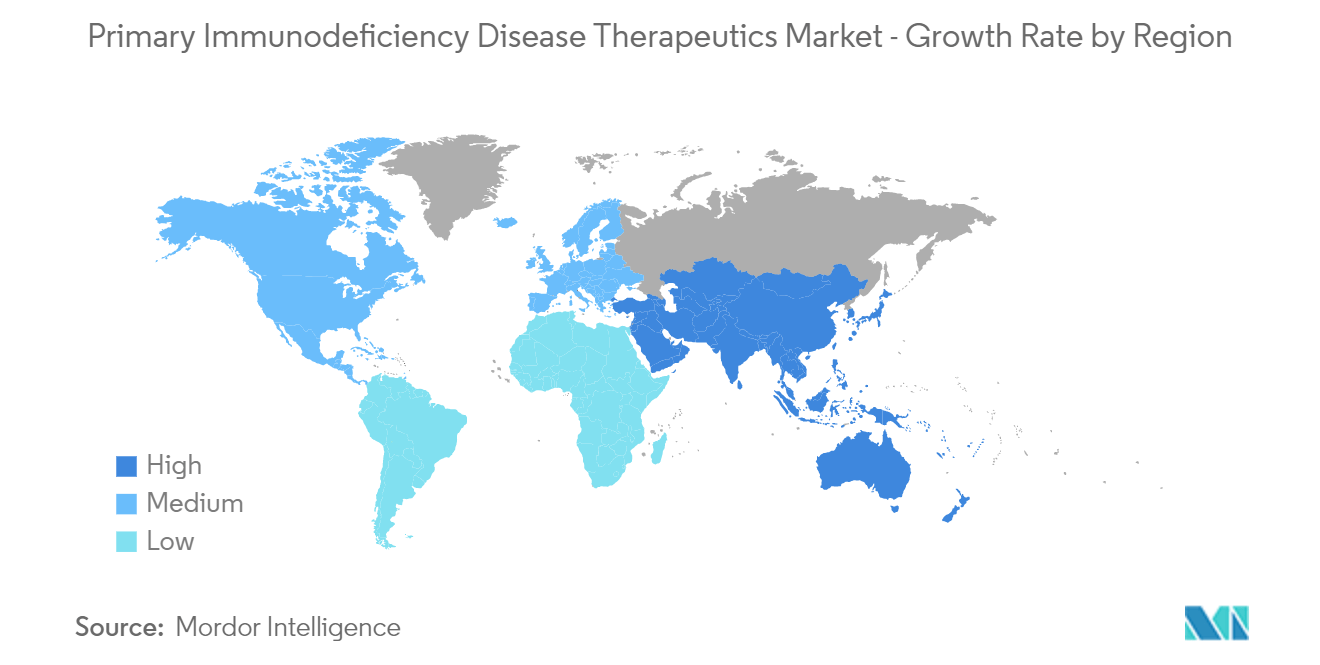Market Trends of Global Primary Immunodeficiency Therapeutics Industry
This section covers the major market trends shaping the Primary Immunodeficiency Therapeutics Market according to our research experts:
Gene Therapy Segment is Expected to Hold a Major Market Share in the Primary Immunodeficiency Therapeutics Market
The gene therapy segment is expected to witness significant growth in the primary immunodeficiency therapeutics market over the forecast period owing to the factors such as the rising prevalence of immunodeficiency disease and technological advancement in genetic therapy.
The purpose of gene addition or gene editing in gene therapy (GT) for primary immunodeficiency diseases (PIDs) is to insert a functioning copy of the damaged gene into the patient's hematopoietic stem cells (HSCs).
According to an article published in February 2021, titled 'Gene Therapies for Primary Immune Deficiencies', modified viruses such as lentiviral vectors showed an excellent safety profile without causing any genotoxicity. Several primary immunodeficiency diseases have been treated with gene therapy such as Adenosine Deaminase Severe Combined Immunodeficiency (SCID), X-linked SCID, Artemis SCID, Wiskott-Aldrich Syndrome, X-linked Chronic Granulomatous Disease, and Leukocyte Adhesion Deficiency-I. Such developments are expected to increase the development of therapeutics using gene therapy, thereby fuelling segment growth.
Furthermore, the rising prevalence of non-Hodgkin's lymphoma (NHL) is also contributing to segment growth. For instance, according to the 2022 statistics published by the American Cancer Society, about 80,470 people (44,120 males and 36,350 females) are expected to be diagnosed with NHL in 2022 in the United States. Also, a research study published in April 2020, titled 'Non-Hodgkin's lymphoma: A review' stated that Lymphomas constitute the third most common neoplasm in the head and neck region arising from the lymphoreticular system. This is expected to increase the demand for gene therapy treatments which is anticipated to boost the segment growth.
Therefore, owing to the aforesaid factors the segment is expected to witness growth over the forecast period.

North America is Expected to Hold a Significant Share in the Market and Expected to do Same in the Forecast Period
North America is expected to hold a significant share in the primary immunodeficiency therapeutics market and show the same trend over the forecast period. Factors such as the rising prevalence of immunodeficiency diseases, growing technological advancements in genetic and stem cell therapy, and the presence of high healthcare expenditure and well-established healthcare infrastructure in the region.
According to the 2022 data published by the Organization for Economic Co-operation and Development (OECD), the United States' healthcare spending in 2021 was 17.8% of the total GDP of the country and Mexico's health spending was 6.2% in 2020. Thus, the high healthcare spending is expected to increase company activities in developing effective and technologically advanced therapeutics for treating primary immunodeficiency diseases, thereby propelling the market growth.
The rising prevalence of immunodeficiency disease is the key factor driving the market growth. For instance, as per the 2022 statistics published by the United Nation Acquired Immunodeficiency Syndrome, 38.4 million people were living with HIV in 2021 in the United States and about 5.9 million people were not aware of their HIV status in 2021. Additionally, a 2020 report by the Food Allergy Research and Education estimates that 32 million residents in the United States have food allergies, including 5.6 million children under age 18. About 40% of children with food allergies are allergic to more than one food item.
Additionally, as per the data published by the American College of Allergy, Asthma, and Immunology, allergies are the sixth leading cause of chronic illness in the United States, with an annual cost of more than USD 18 billion and more than 50 million Americans suffer from allergies each year. Also, as per the data published by the Centers for Disease Control and Prevention (CDC), in October 2021, about 1 in 4 United States adults (23.7%) or about 58.5 million people have doctor-diagnosed arthritis.
Similarly, according to the Government of Canada, in September 2020, approximately 374,000 (1.2%) Canadians aged 16 years and older live with diagnosed rheumatoid arthritis. Such a massive prevalence of immunodeficiency diseases among the population is expected to create the need for effective drugs for treatment and thus drive market growth.
Furthermore, the rising company's focus on research and development activities as well as increasing product approvals in the region is expected to increase the market growth over the forecast period. For instance, in December 2021, the Food and Drug Administration granted a new indication for cutaquig (immune globulin, subcutaneous [Human]-hipp, 16.5% Solution; Octapharma) for the treatment of pediatric patients age 2 years and older with primary humoral immunodeficiency (PI). Also, in December 2021, the United States Food and Drug Administration approved Octapharma USA, cutaquig (Immune globulin, Subcutaneous (Human)-hipp, 16.5% Solution) for the treatment of pediatric patients aged 2 and older with primary humoral immunodeficiency (PI).
Therefore, owing to the aforesaid factors the segment is expected to witness growth over the forecast period.

